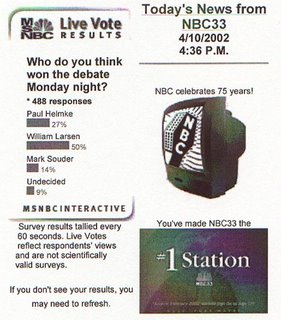Private Accounts: Will there be a new push?
I read in Time Magazine that Andrew Biggs was appointed to Social Security Adminstrator, Deputy by President Bush. He was with the CATO institute the last time we spoke. I think it was in 1998 that he contacted me about a paper I wrote on “Why Economic Growth Was Bad for Social Security.” The paper was picked up by a reasonably good web site and placed on their main page. It got a lot of attention back then.
Andrew contacted me and said he was a social security analyst. We spoke about factors affecting Social Security and the relative importance or weight each had. He had difficulty with the concept that economic growth was bad. He kept bringing up the fact that growth meant higher revenues for Social Security, but had a very difficult time accepting that this same growth rate also affected the growth in future benefits being promised to those under age 60.
In the end the only way to provide proof to him of this was to run ten computer simulations using his values and send them to him. We kept all things the same except changed wage growth, which is also a factor in economic growth. I sent him the printouts and never heard from him again.
My perception was that he and the rest at CATO were and had banked their reputation on a proposal to reform social security based on economic growth. This later turned out to be private accounts. Private accounts as proposed by President Bush will not work.
In general private accounts allow a worker to divert some percentage of their Social Security taxes to a private account. In exchange, the individual's Social Security benefit would be reduced by the value of the equivalent annuity of the diverted tax dollars plus interest at the Treasury rate. This is referred to as the "Offset" condition.
The Social Security benefit formula would also change. Currently previous year’s wages are indexed by the change in the US Average Wage Growth, but now would be indexed by inflation. In addition the number of work years averaged would increase from 35 to 40. This would reduce current promised benefits by up to 30%.
All private accounts do is repackage the problem. It reduces the problem by legislating nearly a 40% benefit cut on those who retire in the future. They all fall far short of yielding the promised Social Security benefit under current law. 44% of your benefit comes from an 8.6% Social Security tax while 56% of your benefit comes from your diverted 2%. Theoretically diverting four percentage points could reduce your social security benefit to zero. One must pay particular attention to the terms "payable benefits" and "promised benefits." Payable benefits are generally equal to 60% to 70% of promised benefits.
It is important to note what reference base is being used when evaluating private accounts. The only way payable benefits can equal promised benefits is for the combined assets of the trust fund and private accounts to total $16 Trillion by years end. The moral is "You cannot get something from nothing."
I think we will see another push for private accounts. The first thing that must be done prior to any debate on Social Security Reform is to educate the public about Social Security. There are so many myths and misconceptions about Social Security that any dialogue is worthless.
Social Security Information



0 Comments:
Post a Comment
<< Home